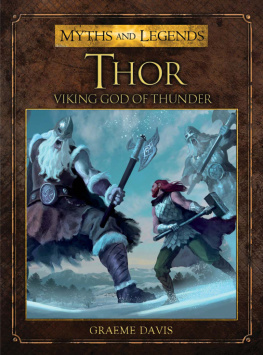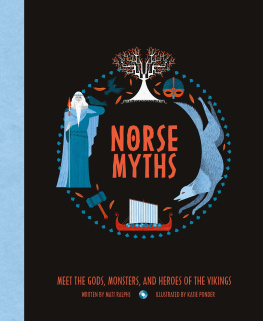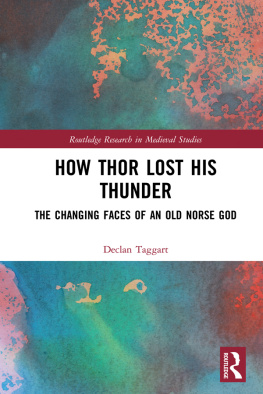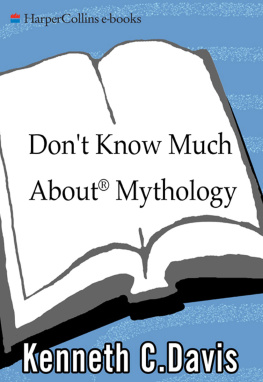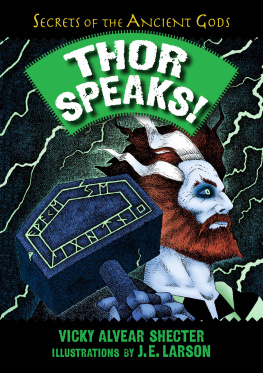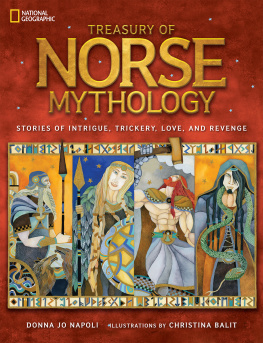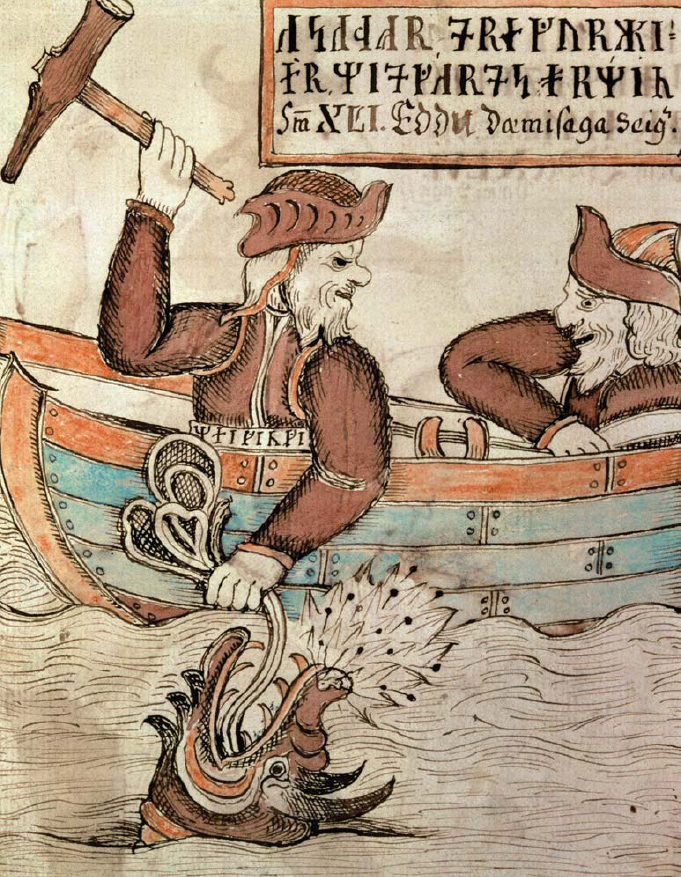Thor is the best known of the Norse gods. From archeological evidence, he also seems to have been the god favored most by the Vikings themselves. The Vikings identified with Thor in a way they did not with the unpredictable Odin, the unyielding Tyr, and the dangerous Loki.
Thors popularity can be explained in several ways. As a god of storms and thunder, he would naturally have been important to a society of seafarers, fishermen, and farmers. Literary sources depict Thor as a Viking writ large strong, bluff, hearty, and fearless so he may have been something of a role model. He is also fallible: this may be because his adventures were first written down at a time when paganism had given way to Christianity in most of Scandinavia, and contemporary retellings of Norse myths were purged of religious content. This turned them into wild adventure tales and reduced the gods to something like modern superheroes.
Perhaps this is one reason why Thor still makes regular appearances in contemporary culture. Since 1962 he has been one of Marvel Comics more popular superheroes, appearing in films and television shows as well as in comics. Thor remains a popular boys name in Scandinavia, and has also been attached to Norwegian and German warships, an American ballistic missile and booster rocket, a British ramjet, and more than one heavy metal act, among other things.
Thors most popular symbol, the hammer Mjolnir, has been adopted in recent decades by a variety of groups ranging from neopagans to rockers and bikers. In recent years its use has been reported among white supremacists. The swastika, infamously co-opted by the Nazi Party in 1920 and used by racist groups ever since, was also originally associated with Thor. It has been variously interpreted as a stylized thunderbolt or a symbol for Thors hammer.
This book examines Thors journey from god to prototypical superhero, and recounts some of the most popular tales told about the Viking god of thunder.
A NOTE ABOUT SPELLINGS
The primary sources for these tales are not consistent about the spelling of many names. In addition, the Old Norse language features a few letters that are not part of our Roman alphabet, and uses accents above many vowels. The result can be confusing and hard for a modern English-speaker to read. Therefore, character names and poem titles have been simplified in this book for the sake of consistency and readability.
Thors Fight with the Giants (1872) by Marten Eskil Winge is a typical 19th-century image of the Thunder God. ( National Museum, Stockholm, Sweden / The Bridgeman Art Library)
The World of Norse Myth
There are a great many names in this book that may be unfamiliar to the casual reader. In order to avoid confusion, the following pages give a brief summary of the major Norse gods and mythological realms.
The Aesir
The Aesir were one of two tribes of Norse gods. The other, the Vanir, were more obscure and are rarely mentioned in the myths.
Odin was the leader of the Aesir. According to some myths he was the father of Thor and many of the other gods, but this may be a later addition intended to bring Norse mythology into line with the classical Greek and Roman model, where Zeus/Jupiter was the father of the gods as well as their chief. Odin was unpredictable and a cunning magician. While hanging on the world-tree Yggdrasil in what sounds like a shamanic ordeal, he sacrificed an eye in exchange for mystical knowledge. In Norse myths, he often travels among mortals as an old one-eyed man in a broad-brimmed hat, bringing good luck and bad.
Frigga was Odins wife and the queen of Asgard. She is said to have had the power of prophecy, but little else is said of her.
Loki is a malicious trickster who constantly tries to attack and undermine the Aesir. He is also the father of the goddess Hel, the Midgard Serpent Jormungand, and the great wolf Fenrir, and the mother (through shape-changing) of Odins eight-legged horse Sleipnir.
Balder, the most beautiful of the Norse gods, is the son of Odin and Frigga. He was killed through Lokis malevolence.
Frey is a Vanir who lives among the Aesir. He and his sister Freyja came to Asgard (along with the little-known Njord, according to some sources) as hostages to seal the peace that ended the AesirVanir war long ago. Both Frey and Freyja seem to be fertility deities.
Tyr was a god of victory in battle, and may also have been the patron deity of the law. When the Aesir determined to bind Fenrir, Tyr placed his hand in the wolfs mouth as a surety that they meant no harm. When Fenrir found himself unable to break the Aesirs bonds, he bit off Tyrs hand.
Sif was Thors wife. Apart from the fact that her golden hair was much admired, little is known of her.
Heimdall was the watchman of Asgard and would sound the horn Gjallarhorn to raise the alarm when the giants crossed the rainbow bridge Bifrost at the start of Ragnarok, the war at the end of the world.
Various lesser Aesir are mentioned in the mythological sources, but these are the main deities who appear in the tales of Thors exploits.
An 18th-century Icelandic image of Thor fishing for the Midgard Serpent. (Royal Library, Copenhagen, Denmark / The Bridgeman Art Library)
The Nine Worlds
The Nine Worlds of Norse cosmology were arranged around the world-tree Yggdrasil in three layers.
At the top were Asgard, Vanaheim, and Alfheim; in the middle were Midgard, Jotunheim, Svartalfheim and Nidavellir; and beneath Yggdrasils roots lay Niflheim and Muspellsheim.
Asgard was the realm of the Aesir, the tribe to which most of the Norse gods belonged. Between Asgard and Midgard stretched Bifrost, the rainbow bridge, guarded by Heimdall against the day when the giants would invade and Ragnarok would begin.
Vanaheim was the home of the Vanir, a second tribe of deities. Apart from Frey, Freyja, and Njord, who lived among the Aesir, the Vanir are obscure. Some scholars suggest that they were the folk-memory of an earlier religion based on the land and fertility.
Alfheim was the land of the Elves (alfar). Frey may have had a hall there, or he may have owned a hall called Alfheim, which was situated in Asgard the myths are unclear.
Midgard was the land of humans. Midgard was encircled by a deep ocean, at the bottom of which lay Jormungand the Midgard Serpent, encircling the world with its tail in its mouth.
Jotunheim was the land of the giants, where many of Thors adventures take place. It seems to have been much like Midgard.
Svartalfheim was the land of the Dark Elves. Little is said of them in Norse myth, although some scholars equate them with dwarves and claim that Svartalfheim and Nidavellir were two names for the same place.

